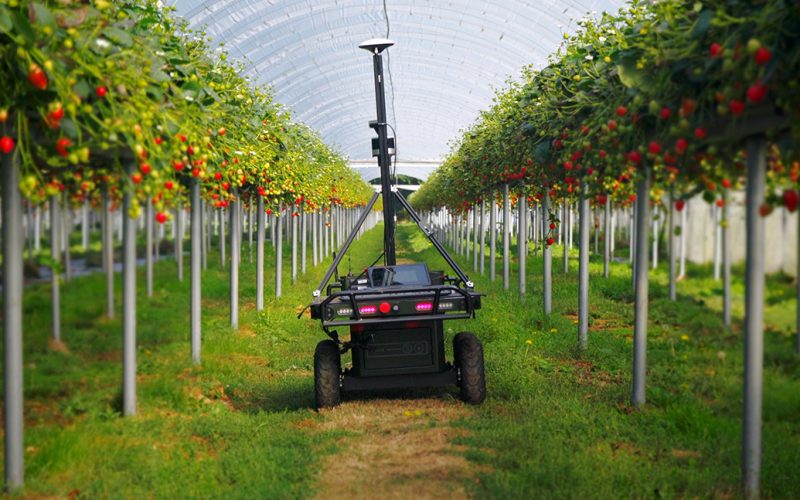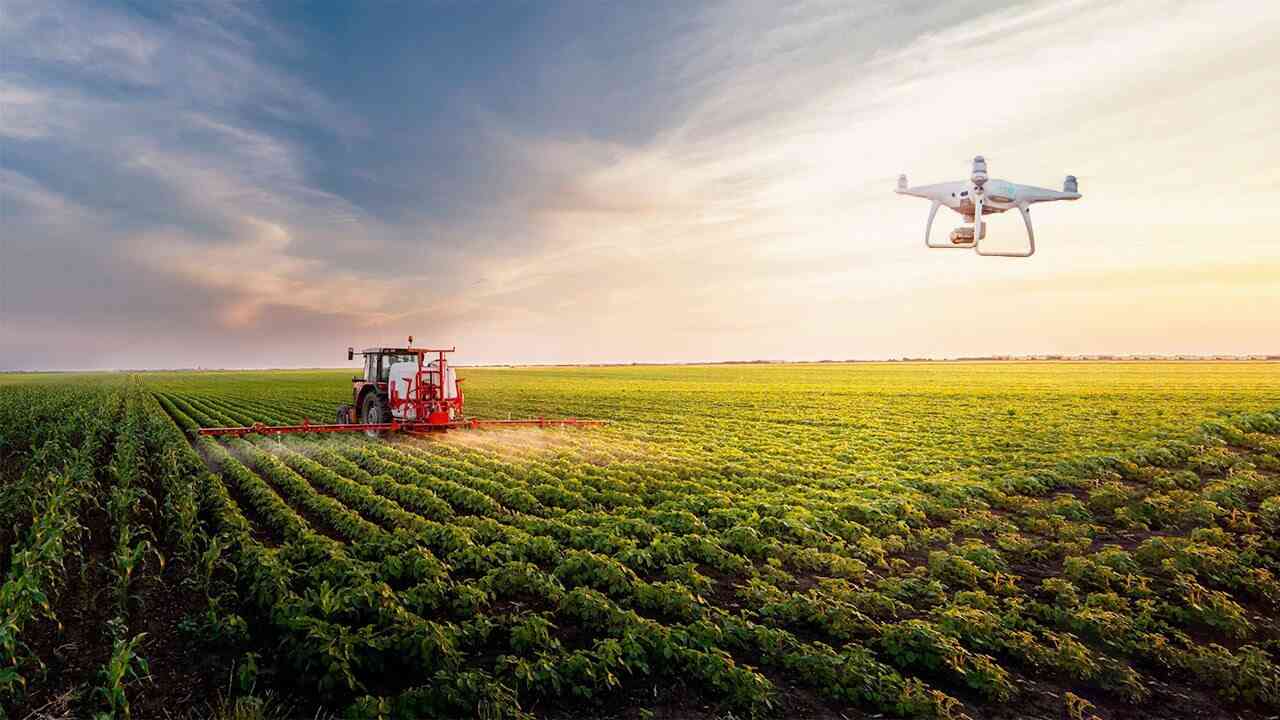I spent most of my career creating the conditions for digital tools and innovation to make process and production more efficient, or to create new business value. My MBA thesis focused on the factors of successful digital innovation, one of which was mindset of those using/ adopting the technology.
One of the many challenges we’ll face in the near future is that global population is expected to reach 10 billion by 2050 whilst degradation of soils and access to water means farmers will be asked to produce more food with less land, water, and other resources.
The question I’ve faced into recently is twofold:
- What are the ways in which digital transformation can, or does, improve agriculture
- Does Farming in the UK have a mindset of innovation to continue to make use of digital tools.
Context
Agriculture could be argued to be the enabler of human civilisation providing increasingly sophisticated sustenance as we moved from entirely hunter gatherer ways of life. The concept of cities, specialisation and industrialisation that’s have characterised the last millennia have been made possible because we were able to be stationary and have a (mostly) reliable food source to rely on.
Technological innovations have helped transform traditional farming practices, improving crop yields, protecting crops and creating greater efficiency. Some notable examples from the past 10000 years include:
- The plough supporting cultivation of more land and planting crops more efficiently.
- The reaper, which helped farmers harvest crops faster, and the
- seed drill, enabling more precise planting of crops

In the nineteenth century increasing mechanisation and use of steam and then fossil fuel power increased the area that could be cultivated and then by late twentieth century the green revolution lead to increased crop yields and improving food security through the use of advanced plant breeding, fertilisation, and irrigation techniques.
It would seem that farming has a long history of technology innovation.
Present – Agritech
Human use of digital tools for work and play has been a defining feature of the recent decades. In many aspects of life, we’ve made our activity more efficient by automating connecting and informing with the use of digital technology.
The theme of agriculture and digital technology collide and have been termed Agri tech – the use of technology, innovation, and data-driven solutions with the goal of
- Increasing agricultural productivity
- Reducing environmental impact
- Enhancing food security
- Supporting sustainable farming practices
- Improving economic outcomes for farmers and supply chain participants
- while reducing emissions

Edinburgh University (2024) asserts Agri-tech uses ‘data technologies, combining AI, robotics, and biotech, along with local and global data on livestock, food species, disease state, soil conditions, weather patterns, and more’
Investment in Agritech is increasing. A recent report on Globalnewswire stated that The global agritech market was valued at £19.1 billion in 2024 and is expected to reach £38.2 billion by 2030, representing a compound annual growth rate of about 12.3%.
For context this rate of growth outstrips projected growth of renewable energy (8-9%), Biotech (7%) and Fintech (6-7%).
Deployment
So far, we’ve established that agriculture has a history of innovation and that Agritech is attracting investment at a rate beyond comparable industries. Now let’s turn to the use of digital tools in farming.
Digital tool proliferation is in part because of adaptability – there is no single use of digital. It should come as no surprise then that the application of digital tooling in agriculture reads very similar to digital transformation enablement in many other industries.

Agmatix (2025) states the core of digital architecture is data and the Internet of Things (IOT) which enables harvesting data on a massive scale and supporting data driven insight with key usage including:
- Cloud storage and AI – potentially making previously inaccessible information available maximising opportunities for field trial research, crop nutrient management.
- Data management tools, provide scientists and farmers with the raw data needed to transform the agricultural sector into a digital-first industry.
- IoT connected devices IoT sensors can alert farmers to variations in the microclimate, PH levels, and the presence of disease or other crop pests and can optimise irrigation and nutrient applications reducing growing costs.
- Automation of drip-feed irrigation can be optimized with the use of a basic weatherproof computer and crop growth can be monitored
- Smartphone ubiquity: supports understanding of commodity markets, consumer preferences, selection of ideal crop varieties and seed selection for local conditions and finally connect to the buyers.
We can see a history of innovation, investment and practical application.
My experience is that for digital transformation to be successful the mindset and culture must be supportive of adoption. For insight into the mindset, I turned to Agritech Centre UK (2025) who have recently surveyed UK farmer’s perspective using 122 interviews, workshops, and focus groups with UK farmers.
Their findings provide a positive view of the landscape.
- Innovation is seen as a natural, continuous process — not just about tech, but about problem-solving and improving practices.
- Farmers value simplicity, practicality, and measurable benefits over high-tech solutions that don’t fit real operations.
- 73% of surveyed farmers said technology adoption was the biggest change in the past 5 years.
Crucially 72% describe themselves as moderate or progressive adopters of digital innovation – though rightly balance innovation against cost, risk, time, and usability.
Practical gains were pf primary importance: time savings, workload reduction, efficiency, and cost savings and Farmers expressed high interest in :
- Automation and robotics (labour-saving).
- Data analytics for decision-making.
- Sustainable technologies (soil, carbon, renewable energy).
- Disease- and pest-resistant crop varieties.
- Prefer incremental improvements over disruptive change.
Closing thoughts
For me, the picture that emerges is one of optimism and opportunity.
Agriculture has always evolved through innovation, from the plough to the Green Revolution, and now into the digital age with Agritech leading the way. With increasing investment, practical applications of IoT, AI, and data analytics, and a UK farming community open to incremental, meaningful digital adoption, the sector seems placed to utilise Digital transformation in countering the challenges of a growing global population and finite resources.
Far from being a distant vision, the transformation is happening now, combining tradition with technology to make farming more efficient, sustainable, and resilient.
Exciting times lie ahead, and those willing to embrace these tools will not just survive but thrive.
Select References
- Agmatix, 2025. The Internet of Things in Agriculture [online]. Available at: https://www.agmatix.com/blog/the-internet-of-things-in-agriculture/ [Accessed 15 October 2025].
- GlobalNewswire ( 2025) : Agritech Market Global Outlook & Forecast Report 2025-2030: Rise of Vertical Farming and Controlled Environment Agriculture, and Increased Investments in Agri-Biotechnology and Sustainable Practices [online]. Globe Newswire, 13 May 2025. Available at: https://www.globenewswire.com/news-release/2025/05/13/3080018/28124/en/Agritech-Market-Global-Outlook-Forecast-Report-2025-2030-Rise-of-Vertical-Farming-and-Controlled-Environment-Agriculture-and-Increased-Investments-in-Agri-Biotechnology-and-Sustain.html [Accessed 15 October 2025].
- University of Edinburgh (2024) The Royal School of Veterinary Studies, University of Edinburgh. 2024. What is Agritech? [online]. Easter Bush Agritech Hub. Available at: https://vet.ed.ac.uk/easter-bush-campus/agritech/glossary [Accessed 15 October 2025].
- UK Agri-Tech Centre, 2025. Reports & Brochures [online]. Available at: https://ukagritechcentre.com/news-insights/reports-and-brochures/ [Accessed 15 October 2025].

